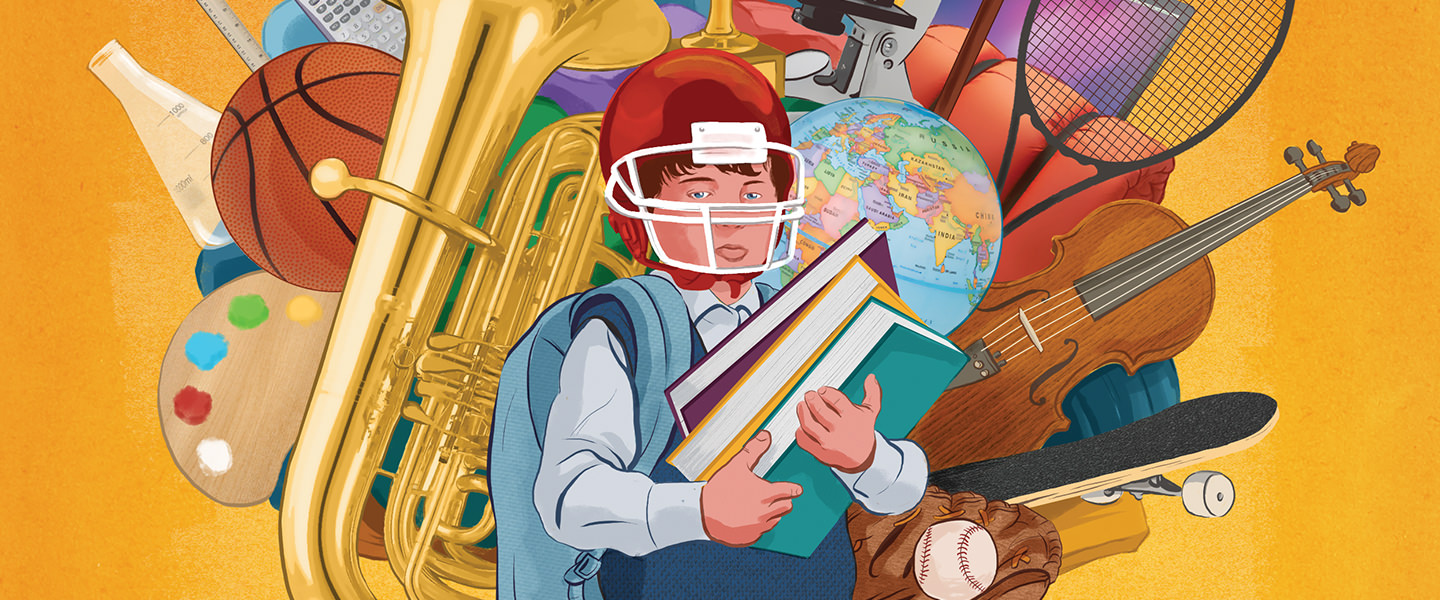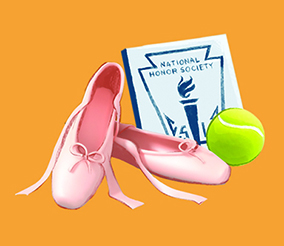The Kids Are Alright?
Professor Jennifer Fredricks has built a body of research about the benefits—and potential downsides—of extracurricular activities.
It's 5 p.m., and 12-year-old David Sullivan is practicing his lines onstage at the historic Regent Theatre in Arlington, Massachusetts. In between his scenes, he heads backstage to work on his homework. At some point, he’ll eat a quick dinner.
Three days a week, David’s mother, Leslie Sullivan, picks him up from school in Boston at 3:15 p.m. There is time for a quick snack, and then it’s off to rehearsal from 4:30-8 p.m. On the days he doesn’t have rehearsal, he has a combined voice and piano lesson and practice for the Boston Children’s Theatre show choir. On Saturday mornings, he takes a four-hour Russian Mathematics enrichment course. Then he heads back to the theater for more rehearsals.
The youngster is passionate about acting, and he comes alive onstage. He’s smart and talented—he’s performed in more than a dozen theater productions and was recently featured in a Lego commercial. He does well in school and has a large network of friends.
But still, his mother worries.
“He doesn’t have a lot of free time. I worry about him being overscheduled. A lot,” she says.
The good news
National surveys show that more than 80 percent of children and youth participate in at least one extracurricular activity during the year, whether it is sports,theater, music, student government, academic clubs or service-based activities.
And that’s a good thing. Numerous studies have linked extracurricular participation to higher grades, higher achievement test scores, higher civic engagement and lower rates of delinquency and substance abuse.
“Kids who participate do better academically; they have higher self esteem, lower rates of depression and they are less likely to drop out of school,” saysHuman Development Professor Jennifer Fredricks.
Fredricks, who also serves as the faculty director of the College’s Holleran Center for Community Action and Public Policy, has devoted much of her career to studying extracurricular participation and youth development from a multitude of angles. She has published more than 50 journal articles and book chapters in the leading adolescent and educational journals and her work has been supported by grants from the National Science Foundation, Institute for Educational Studies, Spencer Foundation and William T. Grant Foundation. She is also the author of a book for teachers, “Eight Myths of Disengagement: Creating Classrooms of Deep Learning.”
Through large-scale longitudinal surveys and interview-based studies, Fredricks has built a body of research about who participates in extracurricular activities and why, who benefits most and how, and how much really is too much.
Fredricks says that it’s common for parents of highly scheduled kids, like Leslie, to fear that their kids are doing too much. In fact, in recent years, some parenting experts and child psychologists have sounded alarms, warning parents about overscheduled kids who could become maxed out, stressed out and sleep-deprived. They argue that too many piano lessons, soccer practices and National Honor Society meetings have left a generation of kids without enough unstructured leisure time for exploration, play and rest.
Those fears are largely unfounded. For starters, the vast majority of kids spend far less time on organized sports and clubs than they do on leisure activities. One Society for Research in Child Development study, “Organized Activity Participation, Positive Youth Development, and the Overscheduling Hypothesis,” found children ages 5-18 spent an average of five hours per week on extracurricular activities—and between 13 and 17 hours watching television. Approximately 40 percent of the surveyed youth were currently participating in no organized activities.
“Studies of adolescent time use show that some youth are spending as much as nine hours a day on media-related activities,” says Fredricks.
For kids who do participate in extracurricular activities—even at high levels—the benefits largely outweigh the negatives. Participating in sports and other activities helps children and teens learn to structure their time. In a 2012 study published by the Journal of Youth and Adolescence, Fredricks found that the breadth, or number of different types of activities, and intensity, or frequency, of extracurricular participation in 10th grade was positively related to math achievement test scores, grades and educational expectations in 12th grade.
Lisa Feeney’s three sons—ages 17, 15 and 13—are all heavily involved in sports. Her oldest, Dylan, plays baseball year-round and is part of a student-athlete mentor club at school. Her middle son, Brendan, also plays baseball and is involved in several school-based clubs. Kyle, the youngest, plays football, baseball and golf, and is also in confirmation classes at church.
Feeney, who lives in East Lyme, Connecticut, estimates that during the busiest seasons her older sons spend about 15 hours a week on extracurricular activities, with the youngest averaging closer to 12 or 13 hours. It’s a lot, she admits, but this busy schedule keeps her kids on track.
“They are all doing things they want to do,” she says. “It keeps them focused, and keeps them out of trouble.”
The tipping point
The more students participate, the more they benefit. However, there is a point at which the benefits of participation level off and begin to decline, Fredricks’s research shows. Using national survey data from more than 13,000 U.S. 10th graders, she calculated the leveling off point at about 5-7 activities or 14 hours or more per week.
“We do start to see some small negative impacts at about 6-7 activities or more than 20 hours,” Fredricks says.
That may be due to the stress of balancing multiple activities and a lack of adequate time for academics and sleep. However, Fredricks is quick to point out that only about 3-6 percent of youth participate at these high levels, and even those who do still fair better than their peers who don’t participate at all. Often, the outcome depends on who is driving the participation, and why.
“One of the biggest factors in negative outcomes is parental pressure,” says Fredricks. “If kids are not doing it because they want to do it, that is where it becomes a problem.”
Morgan Rentko ’17, for example, estimates that she spent about 15-20 hours a week on extracurricular activities during her busiest seasons in high school. At various times during the year, she ran cross country, played piano, was editor of her high school’s literary magazine, was on the student council, participated in a mock trial club, was part of a charity group, was a member of the youth choir at her church and participated in theater productions.

